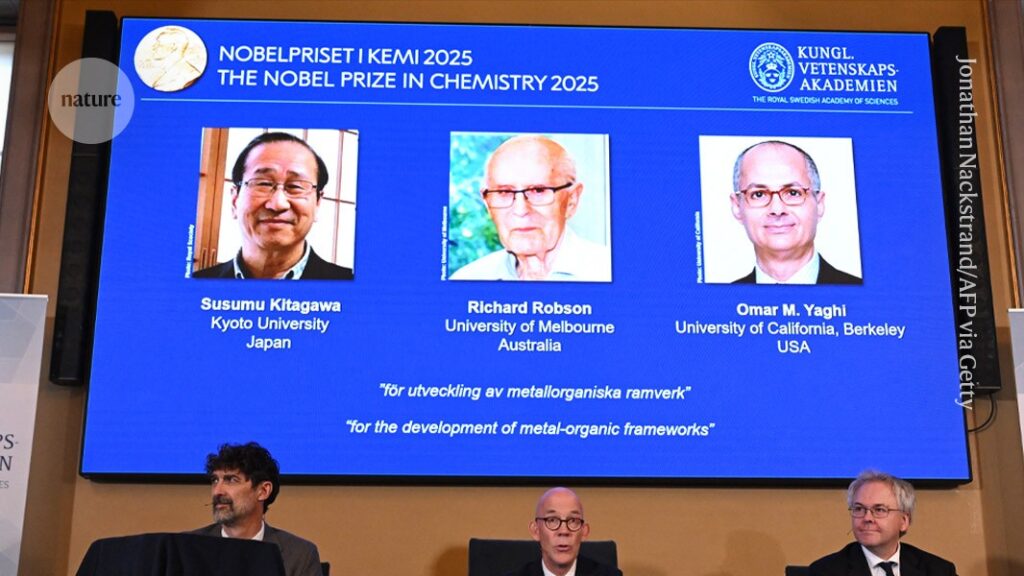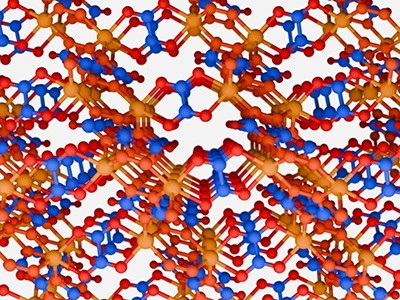Susumu Kitagawa, Richard Robson and Omar Yaghi share the 2025 chemistry Nobel.Credit: Jonathan Nackstrand/AFP via Getty
Three scientists who developed a class of extremely porous materials known as metal-organic frameworks (MOFs) have won this year’s Nobel Prize in Chemistry.
Susumu Kitagawa at Kyoto University in Japan, Richard Robson at the University of Melbourne, Australia, and Omar Yaghi at the University of California, Berkeley, will share the prize of 11-million Swedish kronor (US$1.2 million), for inventing a new form of molecular architecture. Because they have such a vast internal surface area, MOFs can store gases, act as catalysts and deliver drugs, among many other potential uses.
World’s most porous sponges: intricate carbon-trapping powders hit the market
“This year’s laureates…have found ways to create materials, entirely novel materials, with large cavities on their insides, which can be seen almost like rooms in a hotel so guest molecules can enter and also exit again,” said Nobel committee chair Heiner Linke, a nanophysicist at Lund University in Sweden, at a press conference announcing the prize. “A small amount of such material can almost be like Hermione’s handbag in Harry Potter – it can store huge amounts of gas in a tiny volume”.
The MOF concept was first developed by Robson in the 1980s. Inspired by the structure of diamond crystals — in which each carbon atom binds to four other carbon atoms — he and his collaborator Bernard Hoskins designed a material made of pyramidal-shaped modules, with metal atoms linked by organic molecules1,2.
In the early 1990s, Kitagawa developed MOFs that could be filled with water, and were stable enough to not be disrupted if they were subsequently dried up. He also realized that the frameworks could change shapes depending on whether they were filled or not.


